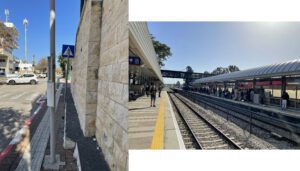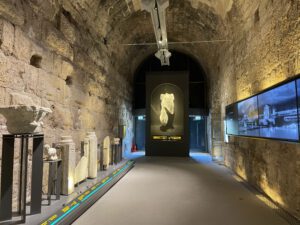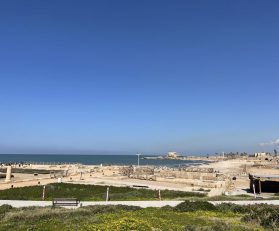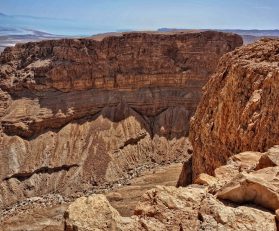Located between Tel Aviv and Haifa, Caesarea is probably the most important archaeological site on Israel’s Mediterranean coast. Not only the Roman founders of the city, but also Muslims and Crusaders have left their traces in the area around the ancient port. Despite its central location in Israel, however, it is not easy to reach the extensive ruins by public transportation. This is mainly due to the fact that the bus to the two nearby train stations Binyamina and Caesarea/Pardes runs only extremely sporadically. In this article we will show you how to get there and why Caesarea is worth a visit.
HOW DO I GET TO CAESAREA?
Train Tel Aviv – Binyamina (Hahagana: 9:16, Hashalom 9:21, Savidor Center 9:26, University 9:31)
Bus 80 Binyamina – Caesarea Amphitheater (10:30)
HOW DO I GET BACK TO TEL AVIV FROM CAESAREA?
Bus 80 Caesarea Antiquities Center – Binyamina (15:50)
Train Binyamina – Tel Aviv (16:26)
The first relatively uncomplicated way to get there is by train from Tel Aviv to Binyamina. Once you arrive in Binyamina, you will have half an hour to change to the bus. You can use this time, for example, to buy a hot drink or a snack in the café inside the station. Then you have to cross the tracks from the station building on a pedestrian bridge. Directly behind the steps of the bridge is already the bus stop, of which, unfortunately, only remnants remain.

Tip: Do not go to the bus stop on the opposite side of the street, which is clearly more recognizable as such. The buses here go in the wrong direction!
Bus 80 leaves from here at 10:30 to the ruins of Caesarea Maritima. To minimize walking distance, it is a good idea to take the bus directly to the stop at the amphitheater. Just tell the bus driver and he will surely tell you where to get off.
Once you arrive in Caesarea, you have to pay the entrance fee for the national park (39NIS). Then you will be in front of the first sight: the partially reconstructed amphitheater of Caesarea. Climb the steps and experience the view of the sea and the rest of the ancient city!

A few steps further, right on the coast, you can admire the foundations of Herod’s palace and some columns testify to the splendor of the halls of the buildings once built here. Crossing the ancient horse track, in a few hundred meters you can reach the part of Caesarea that was still used by Muslims and Crusaders. Here some buildings and fortifications from this period have been preserved. In the center of the complex there is also the Visitor Center, which today houses an interesting exhibition. This place represents Caesarea’s eventful history like no other: before the visitor center, there was first a Roman temple here, then a mosque and finally a Christian church.

Tip: Especially in summer, a visit to Caesarea’s beach is worthwhile in addition to the national park. Here you can swim next to the ruins of an aqueduct!
The return journey is the same as the arrival. From the bus stop “Antiquities Center” you can take bus 80 to Binyamina. It stops at the same place where you got on the way there. At the train station in Binyamina you get back on the train and reach Tel Aviv in about 45 minutes.



